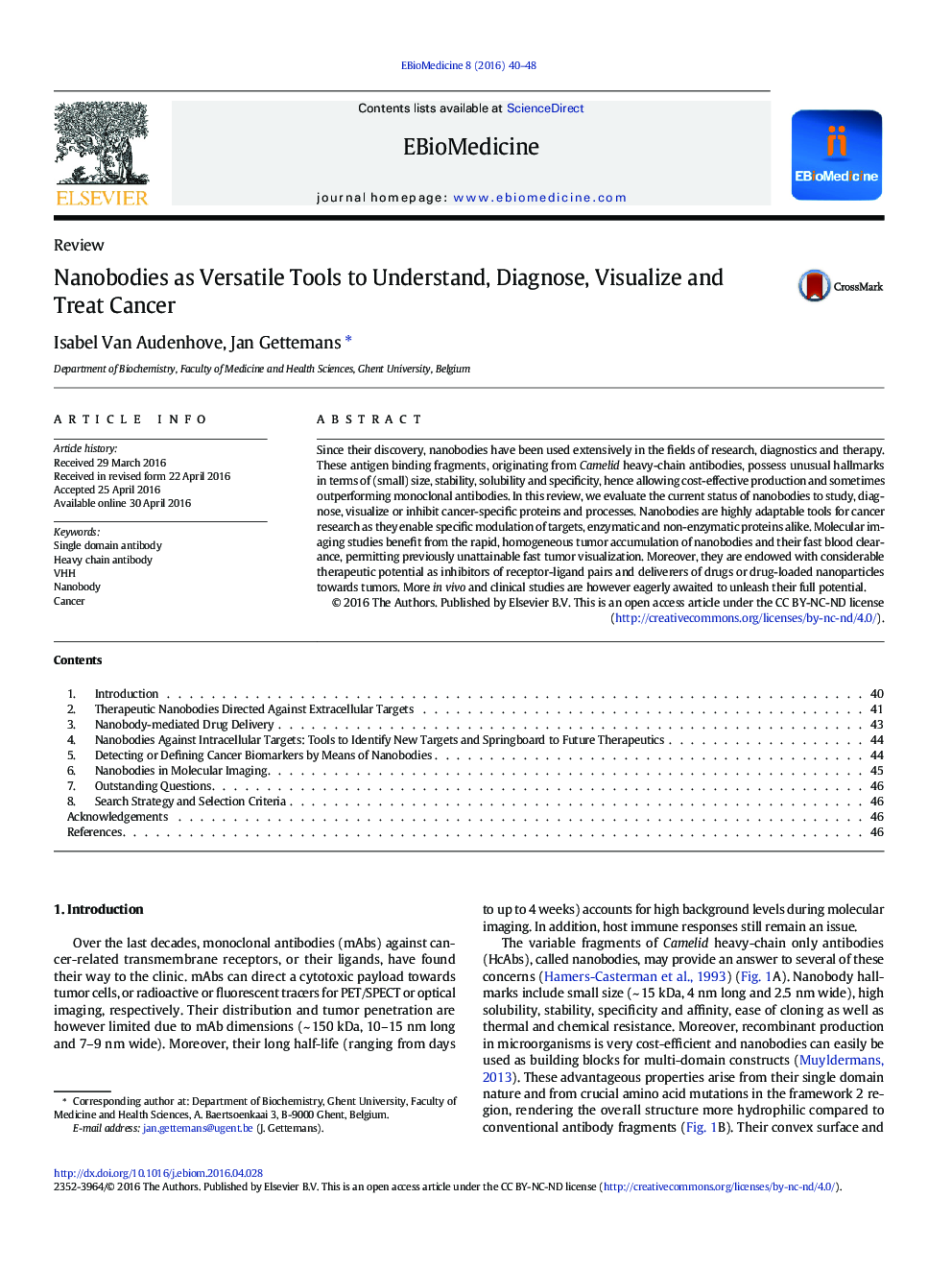| Article ID | Journal | Published Year | Pages | File Type |
|---|---|---|---|---|
| 2120751 | EBioMedicine | 2016 | 9 Pages |
•Nanobodies can be applied as highly specific diagnostic agents and molecular imaging probes.•Their intracellular functionality enables analysis and prediction of interesting therapeutic intervention points.•Therapeutic potential is high and can be obtained with bare, ionizing, or drug- and particle-guiding nanobodies.
Since their discovery, nanobodies have been used extensively in the fields of research, diagnostics and therapy. These antigen binding fragments, originating from Camelid heavy-chain antibodies, possess unusual hallmarks in terms of (small) size, stability, solubility and specificity, hence allowing cost-effective production and sometimes outperforming monoclonal antibodies. In this review, we evaluate the current status of nanobodies to study, diagnose, visualize or inhibit cancer-specific proteins and processes. Nanobodies are highly adaptable tools for cancer research as they enable specific modulation of targets, enzymatic and non-enzymatic proteins alike. Molecular imaging studies benefit from the rapid, homogeneous tumor accumulation of nanobodies and their fast blood clearance, permitting previously unattainable fast tumor visualization. Moreover, they are endowed with considerable therapeutic potential as inhibitors of receptor-ligand pairs and deliverers of drugs or drug-loaded nanoparticles towards tumors. More in vivo and clinical studies are however eagerly awaited to unleash their full potential.
